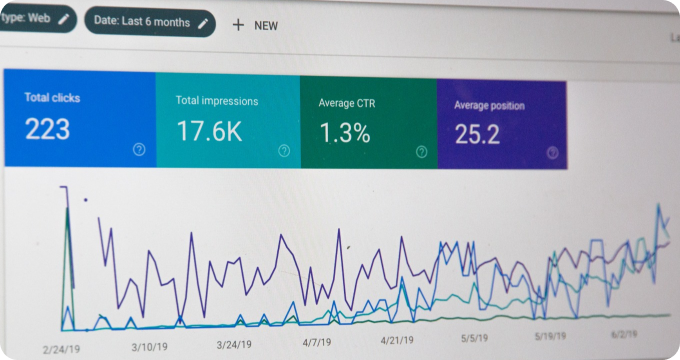8 Things I Wish I'd Known About Product Cost Management Software Before Implementing It
- February 06, 2024
- 3 minutes
Product Cost Management (PCM) Software: An Introspective Analysis
When implementing Product Cost Management (PCM) software, an intricate understanding of the system's capabilities, potential pitfalls, and best practices enhances the likelihood of a successful deployment. I have experienced a fair share of triumphs and tribulations in this domain. In retrospect, there are eight key insights that would have expedited my journey towards a more seamless integration of PCM software.
-
Grasp of the Fundamentals
PCM software is a strategic tool that facilitates the estimation, analysis, and reduction of costs associated with a product throughout its lifecycle. It is integral to the pursuit of strategic cost management, a process seeking to balance the economic interaction between costs, prices, volumes, and profits. Though seemingly straightforward, the application of PCM software requires a comprehensive understanding of cost breakdown structures (CBS), hierarchical, tree-like representations of the costs associated with specific aspects of a product. A robust knowledge of CBS is pivotal to effectively utilize PCM software, as it enables an accurate allocation of costs and identification of cost reduction opportunities.
-
The Importance of an Interdisciplinary Approach
PCM software isn't merely the concern of the finance department; its successful implementation requires collaboration across different sectors of the organization, from engineering to supply chain management. Drawing upon the principles of the Nash Equilibrium from game theory, which propagates the idea that the best outcomes emerge when all players make decisions that benefit the group as a whole, an interdisciplinary approach ensures that all facets of product cost are adequately addressed.
-
Data Availability and Quality
The precision of PCM software is contingent upon the accessibility and quality of data. In the absence of robust, accurate data, even the most advanced software fails to deliver reliable results. Pearson's law, which states that "when performance is measured, performance improves," underscores the significance of reliable data in driving the successful implementation of PCM software.
-
Implementing PCM as a Culture, Not Just a Tool
PCM software shouldn't be perceived merely as a tool; it should be inculcated as an integral part of the company's culture. This resonates with the concept of path dependence in economics which emphasizes the critical role of historical events and decisions on present circumstances. Similarly, the long-term effectiveness of PCM software is largely dependent on the degree to which it is assimilated into the organizational culture.
-
Customization and Flexibility
PCM software must be configured to align with the company's unique needs and operational structure. This echoes the principle of equifinality in systems theory, where diverse methods can be employed to achieve the same end. The software should be adaptable to the existing systems and processes, while also offering the flexibility to adjust as the company evolves.
-
Continuous Training
The complexity of PCM software necessitates constant training and upskilling. This echoes the principle of continuous learning, drawn from the field of adult education, which promotes lifelong learning as a vital component in adapting to changing environments.
-
The Impact of Time
The implementation of PCM software is not an instantaneous process. According to Parkinson’s Law, work expands to fill the time available for its completion. Therefore, realistic timeframes and milestones should be established to avoid hastily rushed or elongated implementation periods.
-
Vendor Selection and Support
Finally, the choice of a PCM software vendor is as consequential as the software itself. The vendor should not just be a provider, but a partner, committed to the product's successful deployment and providing ongoing support. This concept mirrors the principles outlined in the relationship marketing theory, emphasizing the importance of forging long-term, mutually beneficial relationships.
In conclusion, the successful implementation of PCM software is undoubtedly a complex endeavor that requires a holistic approach. The insights shared in this article serve as a guide to aid in navigating the intricacies associated with the process. With diligent preparation, collaborative teamwork, and strategic execution, the implementation of PCM software can significantly enhance an organization's ability to manage and reduce product costs.
Learn More
Unleash the potential of your business by diving deeper into our blog posts, where the world of product cost management software is demystified. For an unbiased, comprehensive view, the reader is encouraged to explore our rankings of Top Product Cost Management Software.
Popular Posts
-
 Product Cost Management Software Industry Report: Unveiling Key Findings and Insights
Product Cost Management Software Industry Report: Unveiling Key Findings and Insights
-
 Debunking 10 Myths About Product Cost Management Software
Debunking 10 Myths About Product Cost Management Software
-
 8 Things I Wish I'd Known About Product Cost Management Software Before Implementing It
8 Things I Wish I'd Known About Product Cost Management Software Before Implementing It
-
 What are Product Cost Management Software Solutions and How Do They Work?
What are Product Cost Management Software Solutions and How Do They Work?
-
 Ask These Questions to a Product Cost Management Software Provider to Choose the Right One for Your Business
Ask These Questions to a Product Cost Management Software Provider to Choose the Right One for Your Business






